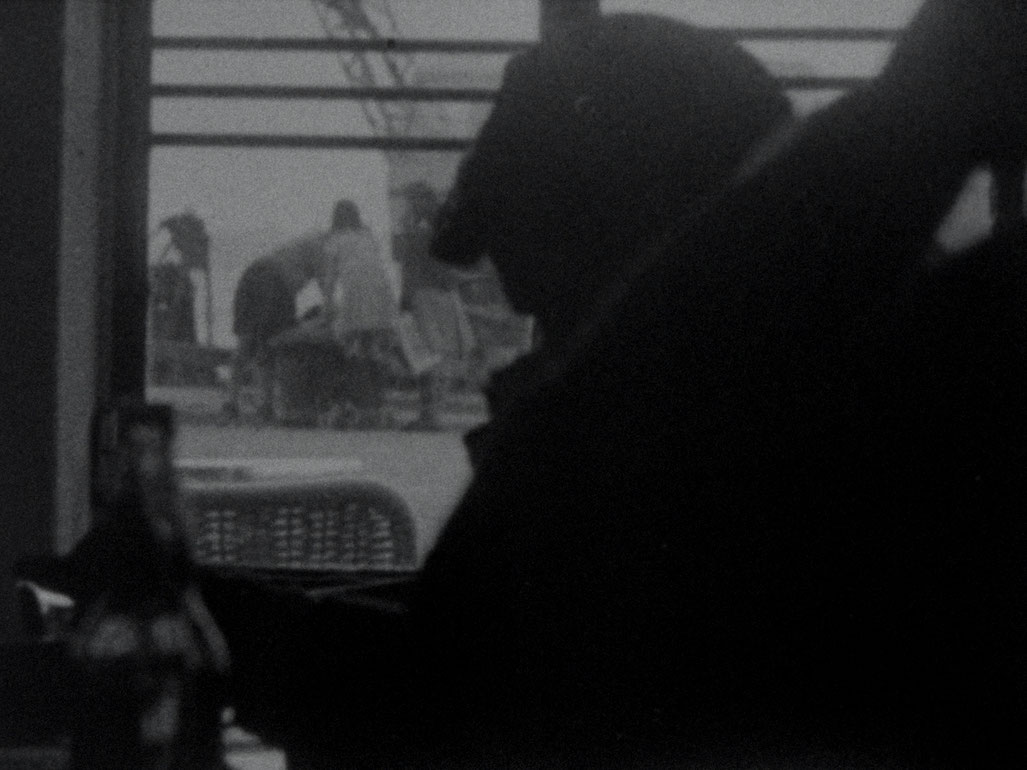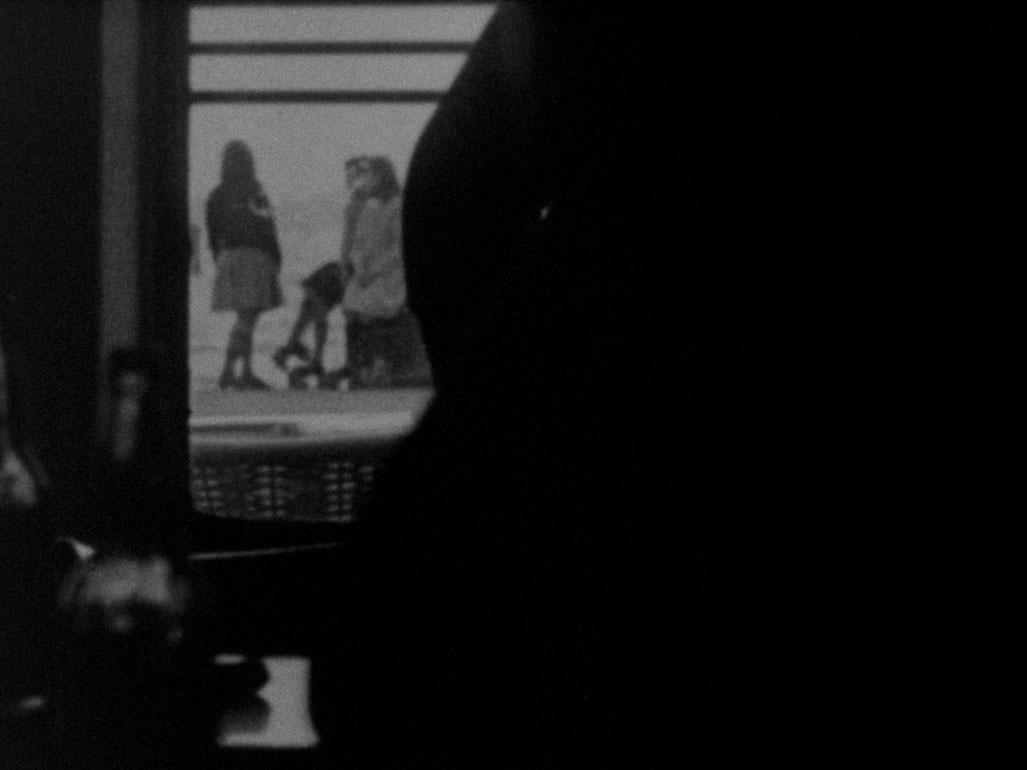15/67 TV
Kren frames the image to suggest a proscenium, with a view to the harbor that conveys a literal sense of “tele- vision”. The static framing of the image and the clearly stratified mise-en-scène can hardly provoke interpretation. The sight of the girls does so all the more. Kren, the gentle voyeur - who turns the viewer into a secret accomplice - observes three teenagers, and probably like them, awaits a rendezvous.
(Thomas Trummer)
Kren´s next important systematic film is TV (1967). In TV, the system is different in kind and pace to that which exists in much of his other work. Instead of operating primarily at the kinetic level, or with rapid perceptual rhythm, this film involves the audience in a conceptual and reflexive process. Five short sequences each about 8 (sic!) frames long are all shot from the same viewpoint in a quay-side café. They show a window, broken by the silhouettes of objects and people within the café and by the passage of people and a ship outside. Each shot containing some small movement is repeated in the film 21 times, in mathematically determined order. They are separated by short, equal sequences of black spacing, except that longer black sequences separate larger phrases of repeats from each other rather like punctuation. Sometimes the same shots follow each other, sometimes all five shots occur in one phrase. The significance does not lie in the mathematical sequences as such, but in how the viewer attempts to decipher the structure. This overtly reflexive attitude to structure became important in a number of European films about this time (notably by Hein, Nekes, Gidal, Le Grice), often incorporating image repetition. But none as clearly shifts the structural activity away from the interior construction as does TV (incidentally prefiguring Frampton´s Zorns Lemma of 1971). An additional value which TV has as a film (over Zorns Lemma) is the depth of its control of image and motion at levels other than the systematic. The qualities of motion within the shots, and their pace, relate directly to the duration of the shots, and the duration of the spaces between. The nature of the similarities between the images and motion is such that the reflexive mode of the viewer is taken through a number of distinguishable phases, as first the images themselves are recognized and defined, then remembered, then their sequence noted and compared via memory. The reflexive activity constantly interacts with the kinetic and associative aspect of the images and their distribution.
(Malcolm Le Grice, Abstract Film and Beyond, 1977)
Malcolm Le Grice zu 15/67 TV von Kurt Kren
Jede dieser kurzen Einstellungen kleiner Bewegungen wird im Film nach einem mathematisch determinierten System 21 mal gezeigt. Zwischen den Wiederholungen findet sich - ähnlich einer Punktuation - Schwarzfilm. Manchmal sieht man dieselbe Einstellung hintereinander, manchmal tauchen alle fünf Einstellungen in einer der Phasen auf. Das Entscheidende liegt nun nicht an der mathematischen Struktur selbst, sondern daran, wie das Publikum sich ihr nähert. War auch der reflexive Zugang zur Filmstruktur selbst bei einigen anderen europäischen Filmemachern zu dieser Zeit wichtig geworden, verschob doch niemand so deutlich die strukturelle Aktivität aus dem Filmzentrum heraus in die Rezeptionsarbeit des Betrachters - was in gewisser Weise Hollis Framptons Zorns Lemma vorwegnahm. Was TV gegenüber Zorns Lemma weiters auszeichnet, ist die präzise Kontrolle der Bildinhalte und ihrer Bewegungen auf anderen Ebenen als bloß der systematischen.
Die Bewegungsqualitäten innerhalb der Einstellungen hängen direkt mit deren Länge sowie der der Zwischenräume zusammen; solcherart durchläuft der Betrachter verschiedene Phasen der Reflexion - zunächst werden die Bilder erkannt, definiert und erinnert, sodann ihre Abfolgen wahrgenommen und ebenfalls über die Erinnerung verglichen; diese reflexive Aktivität steht in einem ständigen Austausch mit den kinetischen und assoziativen Aspekten der Bilderfolgen und ihrer Verteilung. (1977)
Michael Palm zu 15/67 TV von Kurt Kren
Aus dem Warten der Mädchen wird ein lieblicher Tanz, das Schiff im Hintergrund findet Gefallen daran, sich immer wieder träge durchs Bild zu schieben, während die graue Eminenz im Vordergrund das Geschehen auf seltsame Weise unter Kontrolle zu haben scheint und im wiederholten Entziehen des Bildes sich ihren Spaß mit uns macht. An den Gestaden scheint alles zu warten und sich in der Zwischenzeit mit tänzerischen Bewegungen zu vergnügen.
Aus den kleinen, unbedeutenden Momenten ist durch die zyklische Neustrukturierung eine kleine Sonate über das Warten entstanden, die in der Choreographie der Wiederholung immer neue Differenzen zutage zu fördern vermag.
(Michael Palm: Which Way?, Drei Pfade durchs Bild-Gebüsch von Kurt Kren, in: Hans Scheugl (Hrsg.), Ex Underground Kurt Kren. Seine Filme, Wien 1996)


